A homemade gluten free flour blend crafted as a cup-for-cup substitute in gluten free baking. A perfect replacement for all of your sweet and savory needs!
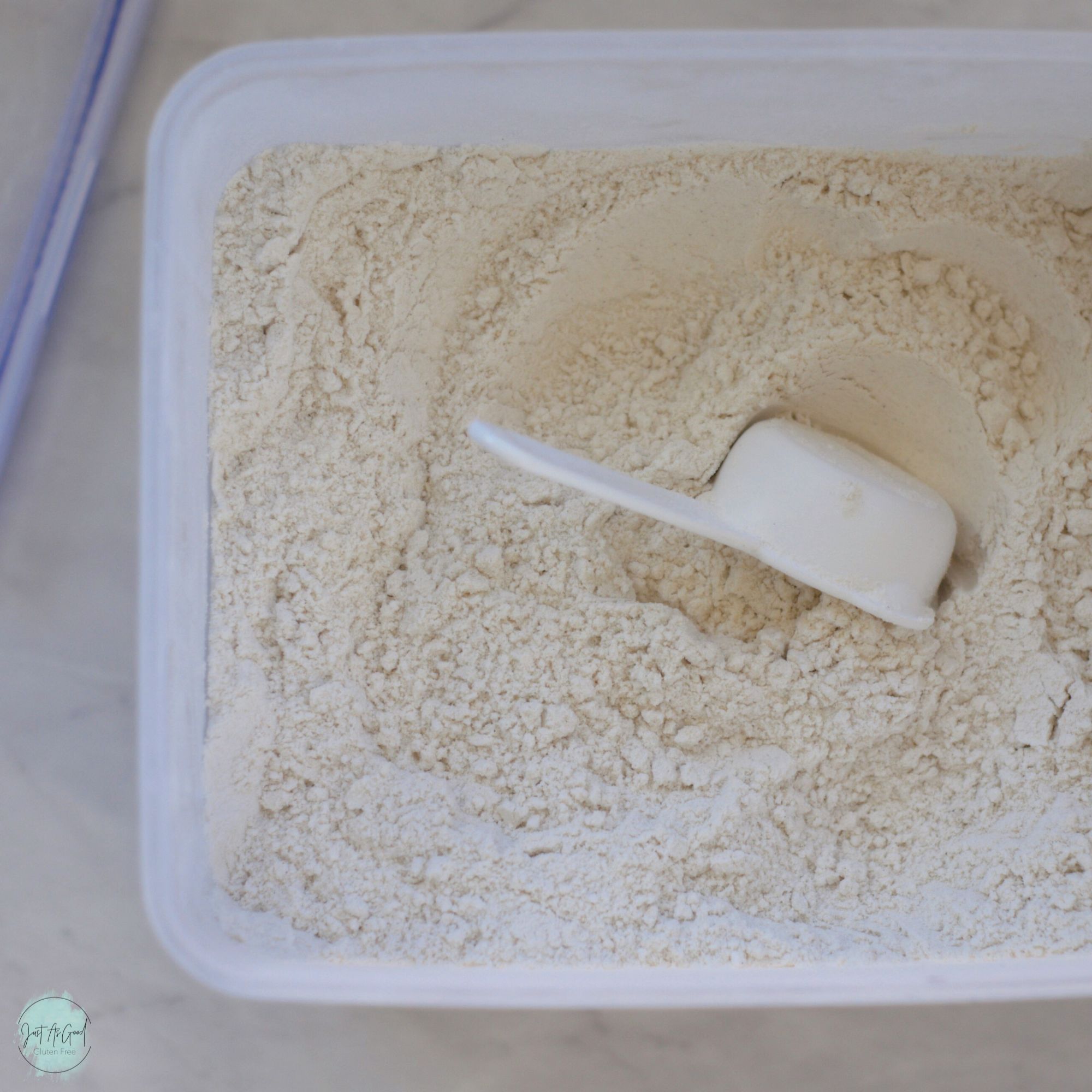
**Recipe, pictures, and content have been updated as of 4/2023
As I embarked on a gluten free diet after a Celiac diagnosis, I was determined to create a gluten free all-purpose flour blend that was reliable and as close as possible to a wheat flour replacement. A few key requirements in making a blend were:
- Taste – when you bake something, it should taste like whatever you’re making! You know there’s a problem if your brain says you’re eating beans but you’re actually eating a chocolate chip cookie – I just can’t do it. My goal was to create a blend that was relatively neutral in taste and color.
- Texture – gluten free is often characterized by grittiness, especially in something like a cookie. In breads, you can visually tell if something is gluten free by the small sponge-like gummy texture. It takes great balance between hydration, fats, and flours to make a recipe work and it all starts with a good blend of flour and starches.
- Availability – with a plethora of gluten free flours available these days, I wanted to make a blend with ingredients that are easy to locate and not overly expensive. There is nothing worse than getting hooked on a certain type of flour only to find its out of stock for the next 6 months.
- Simplicity – I’m not going to lie, there are times I wish I didn’t have to mix my own flour blend and buy the individual flours and make room for storage. However, after a decade of baking gluten free, I consistently come back to this gluten free flour blend recipe. It may take a few extra minutes of my time but the fact that it works well and I know I can count on it makes my life more simple.
- Reliability – there is nothing more disheartening than a bake fail. It takes time, money and effort. I wanted a flour blend I could rely on to provide consistently good results.
- Just As Good – one of my goals from the start was to make gluten free taste just as good as its wheat-based counterpart. There will always be limitations for the simple fact we cannot use gluten, but I am determined to make it as delicious and approachable as possible.
Where to buy various flours and starches
I almost exclusively buy my flours from Amazon for the main reason of convenience. It takes a lot of flour to create and test recipes until they’re just right, so buying flours in larger quantities works well for my needs. Every once in a while I can find flours or starches in a grocery store for less, but it’s pretty hard to beat the convenience of front door delivery. If you’re not a huge baker but still need a good flour blend on hand, simply scale the recipe to meet your needs.
Hey there! Just As Good Gluten Free LLC participates in the Amazon Associates Program, which mean many outgoing links on Just As Good Gluten Free are affiliate links. After clicking on a link, I may receive a small percentage of the sale for referring you, which comes at no extra cost to you. This allows me to continue creating gluten free recipes for you! Many thanks – Amy
Gluten free flour blend ingredients
I typically purchase individual flours and starches on Amazon. I prefer to buy Anthony’s brand, but if it isn’t available, I will often purchase Bob’s Red Mill or other brands as available.
- White rice flour
- Brown rice flour
- Sorghum flour (also known as sweet sorghum flour)
- Tapioca starch (also known as tapioca flour)
- Potato starch (NOT the same as potato flour)
- Arrowroot starch (also known as arrowroot flour)
- Guar gum
Do you really need to weigh flours?
Yes, yes, yes!!
If that didn’t convince you, let me provide a few reasons why you should weigh your flour blend:
- I measure all of my flours and starches on a kitchen scale to make this gluten free flour blend. I also weigh the gluten free flour blend for every recipe I make and include that weight in every recipe on this site. I convinced myself to skip this step for two years and all of my baked goods suffered as a result. My rolls were so dense they could’ve doubled as hockey pucks. Out of desperation I started weighing and was shocked to find an extra 2-3 Tbs per cup!!! Kitchen scales are relatively inexpensive and will last for a long time if you take care of them. You’ll notice a range of prices, but there are a lot of great reviews to back up even the least expensive ones.
- Inadvertently adding extra tablespoons of flour per cup can result in a 10-20% increase in your flour and a very dense baked good.
- My daughter will often bake something gluten free and when it doesn’t turn out right, my first question is always “did you weigh the flour???”. Not surprisingly, the answer is always a sheepish no.
If you’re going to take the time to bake something, take an extra moment to weigh your flour blend. It makes a huge difference in the final result.
What type of gum is best used in gluten free flour blends
Gums are typically used as a replacement for gluten in gluten free baking to help provide elasticity, structure and improved texture to baked goods.
Early in my Celiac diagnosis, I was using xanthan gum in my flour blends and found I would have an upset stomach every time I ate something I made. I happened to read an article “Could Xanthan Gum Sensitivity be Complicating your Celiac Disease Recovery?” explaining how xanthan gum can often cause stomach irritations. Thankfully, it was an easy fix to switch from xanthan gum to guar gum, which I still use to this day.
There are a handful of options to use in your baked goods: xanthan gum, guar gum, Tara gum (I’ve used this one and it works well if you can find it), locust bean gum, and psyllium husk.
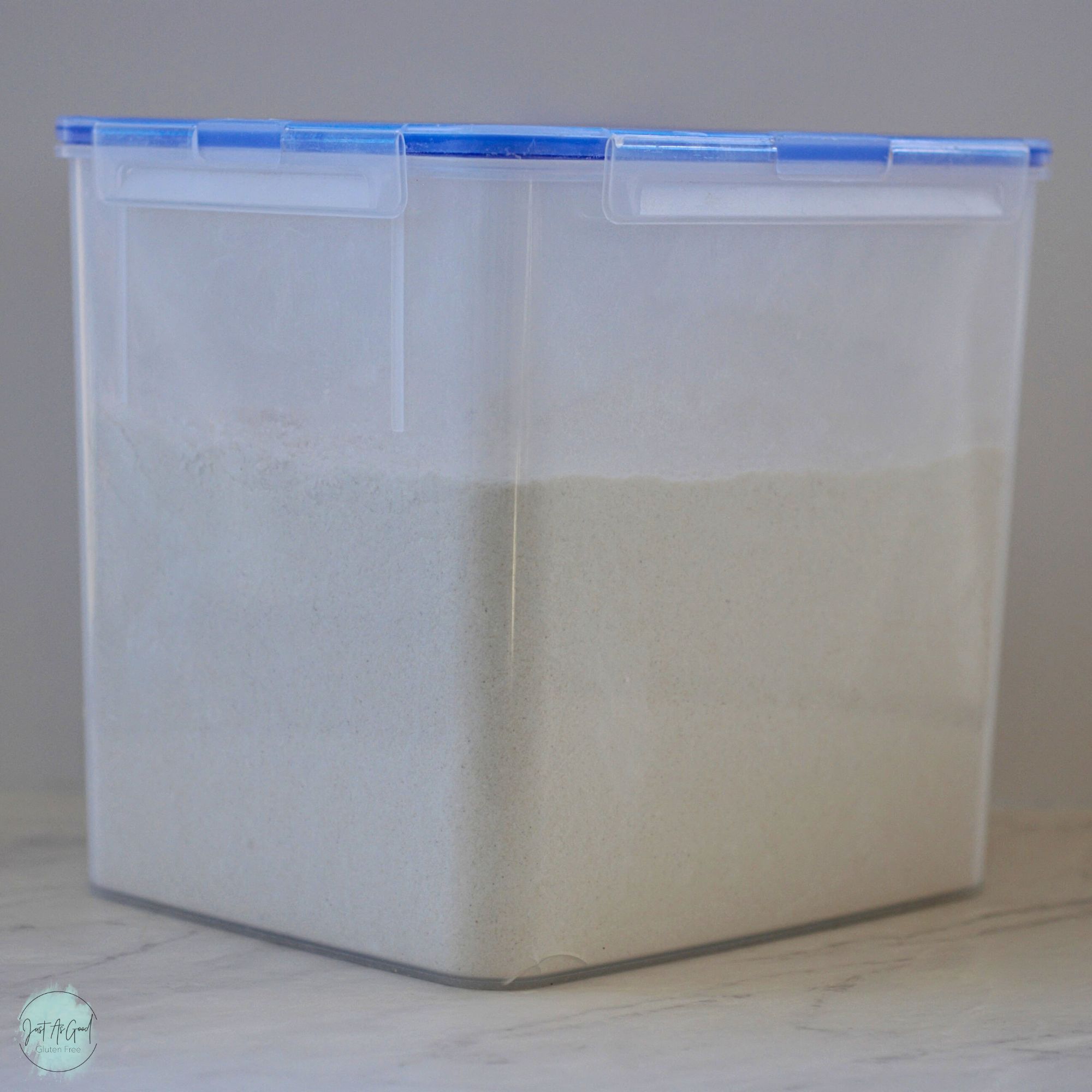
Equipment needed to make your own blend
You really don’t need a lot to make your own blend – the flours and starches (plus a place to store any extra!), a kitchen food scale, and a large container that can hold up to 30 cups of flour (this one holds 40 which is easier to mix the flour blend). Finally, I keep an old ¼ measuring cup inside the container to make for easy scooping.
A good alternative to making your own blend
Bob’s Red Mill Gluten Free 1:1 Baking Flour is my favorite alternative to making my own blend. I find it makes consistently good results in my baked goods and is fairly inexpensive. One cup equals 148 grams of Bob’s 1:1 blend, which is extremely close to 150 grams per cup of the gluten free flour blend recipe below. They are very interchangeable, so I often will use my blend as well as Bob’s 1:1 blend to test recipes. NOTE: Bob’s Red Mill Gluten Free 1:1 Baking Flour IS NOT the same as Bob’s Red Mill Gluten Free All-Purpose Baking Flour!! The all-purpose flour is primarily made with bean flours and has a very different taste than the 1:1 flour blend.
I’ve used other brands but find the combination of flours and starches they use to have off-putting tastes or textures and they often do not equate to a cup-for-cup substitute.
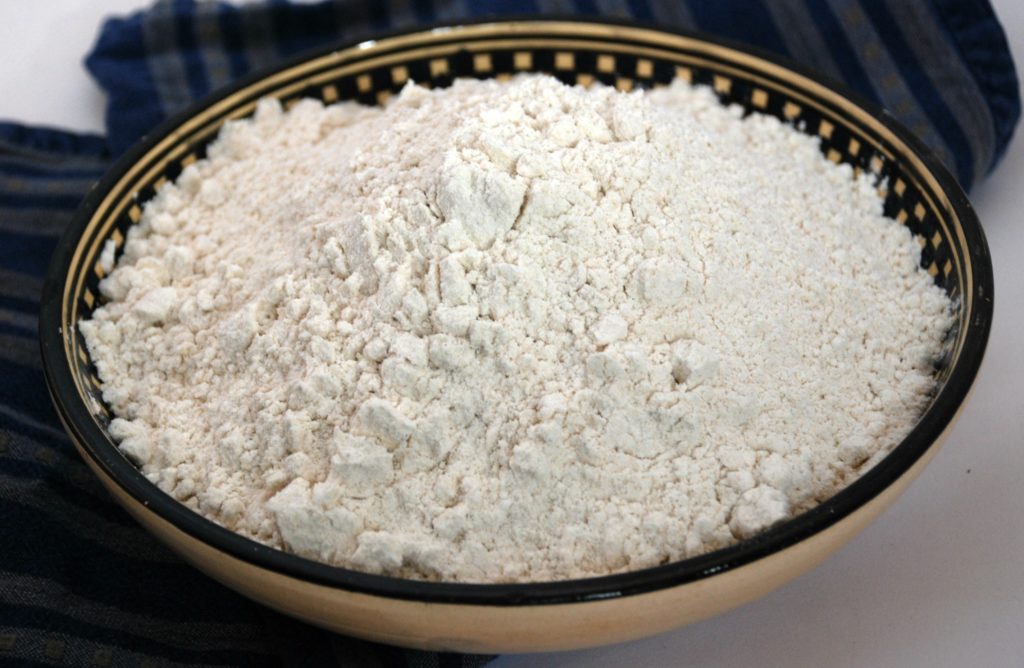
Alternatives for flours and starches in this blend
I do not substitute flours or starches very often in this recipe, with the exception of arrowroot starch. In the past, I used corn starch; however, I prefer arrowroot starch for its more neutral taste and binding effects.
Keep in mind, anytime you substitute a gluten free flour or starch you need to understand how much it weighs in grams per cup! A quick internet search will often give you a quick idea of how much a flour or starch weighs. It can also affect the final outcome of the taste, texture, and weight per cup of flour. Be very cautious when substituting flours, and if you do, know that it may change the outcome of your gluten free baked goods.
See above for notes on substituting gums.
How to store gluten free flour
If you’re storing individual flours or starches, the best place to start is to look on the packaging. Most of time it will tell you if it needs to be stored in a cool, dry place, or best kept in the freezer or refrigerator.
A lot of gluten free flours turn rancid when left sitting at room temperature over time. A quick sniff will let you know if the flour has turned bad. If that is the case, its time to discard the flour and start fresh.
For the gluten free flour blend itself, if you bake frequently and will be using the entire batch over a course of about 3 months, you can store the container at room temperature. Otherwise, it is best to store the container in a freezer or refrigerator. I always store mine in the freezer (although I’ve recently been considering switching it to the pantry since I go through it decently quick and could use the freezer space).
**If you store your flour blend in the freezer, it is often best to bring it to room temperature before using in a recipe, especially in recipes with a lot of room temperature ingredients.
How to use this gluten free flour blend to make a roux
This gluten-free flour blend is perfect for making a roux. Simply melt 4 Tbs butter over medium heat and stir in 2 Tbs gluten free flour blend. Stir for about 1 minute, until bubbly. Gradually whisk in 2 cups of milk, stirring constantly until thickened to desired consistency.
Basically – 4 Tbs fat (butter), 2 Tbs gluten free flour blend, 2 cups liquid (milk).
Original Flour Blend Posting
This was the very first recipe posted on Just As Good Gluten Free, and for good reason, flour blends are essential to gluten free baking! Over the years, I’ve slightly tweaked the recipe. I know a few of you use the previously posted gluten free flour blend, so I’ll leave the ingredients below:
- 1050 grams white rice flour
- 1050 grams brown rice flour
- 600 grams sorghum flour
- 375 grams potato starch
- 375 grams tapioca starch
- 300 grams arrowroot starch
- 75 grams rice bran
A few recipes to try with this blend
This gluten free flour blend is versatile across a variety recipes. Anywhere from pancakes, to pie crust, scones, cookies, or donuts, this is my go-to blend when baking gluten free.
If you made this recipe would you please share a comment below, share a picture on Instagram or Pinterest, join our Facebook group, or sign up for occasional email updates. I’d love to see your pictures!
Happy baking! – Amy
Gluten Free Flour Blend
Ingredients
- 1050 grams (about 8 cups) white rice flour
- 1050 grams (about 7 cups) brown rice flour
- 600 grams (about 4 ⅓ cups) sorghum flour
- 375 grams (about 2 cups + 3 Tbs) potato starch
- 375 grams (about 2 ¾ cups + 2 Tbs) tapioca starch
- 300 grams (about 2 ⅓ cups) arrowroot starch
- 75 grams (about ¼ cup + 3 Tbs) guar gum or xanthan gum
Instructions
- Use a kitchen scale to accurately measure all of the ingredients. Place inside an air-tight container (I use a 40 cup (9.5L) container to allow for easy mixing).
- Store in freezer if you do not use the flour often, or will not use entirely in about 3 months. Bring to room temperature before using in your recipe.
- Make sure the lid is secured, and gently shake the container, flipping up and down and rotating all around, to mix all of the flours together. Alternatively, you can use a whisk to stir the flours together.
- Use as a cup-for-cup replacement in recipes. 150 grams = 1 cup of this blend.

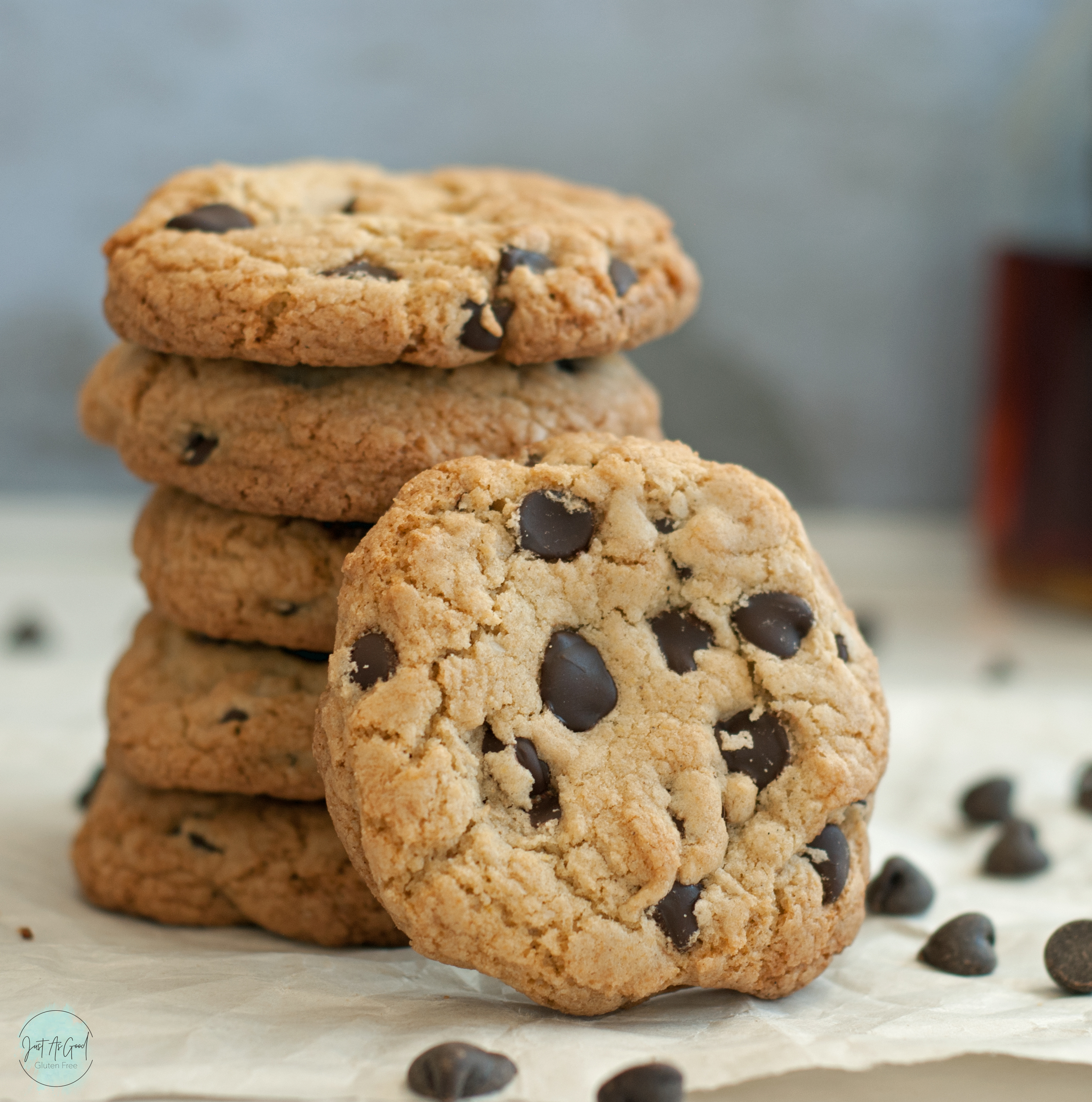
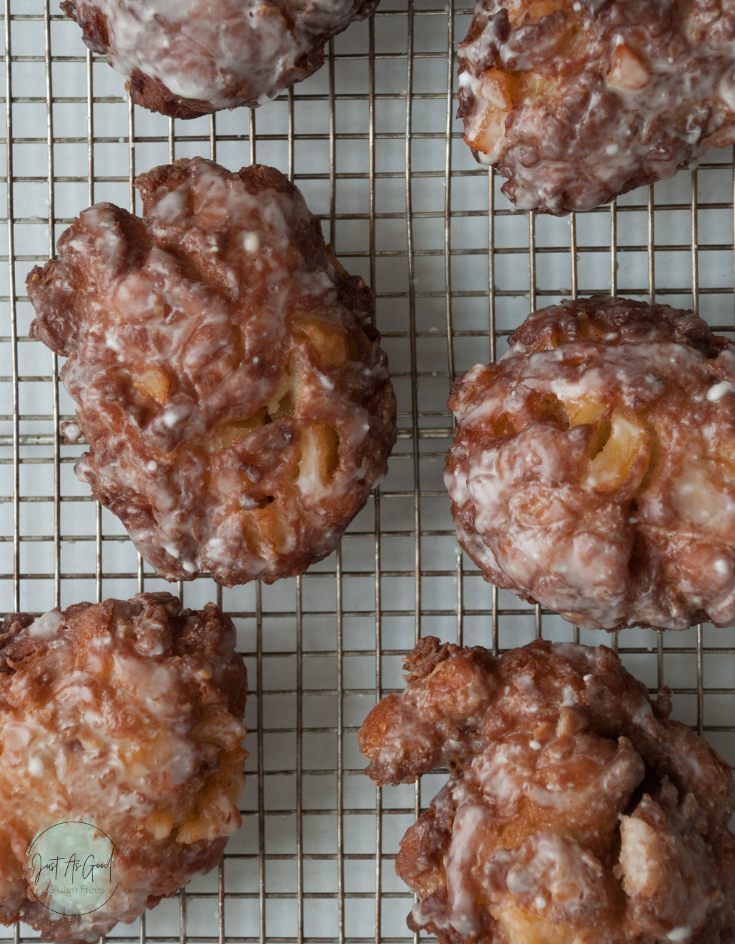
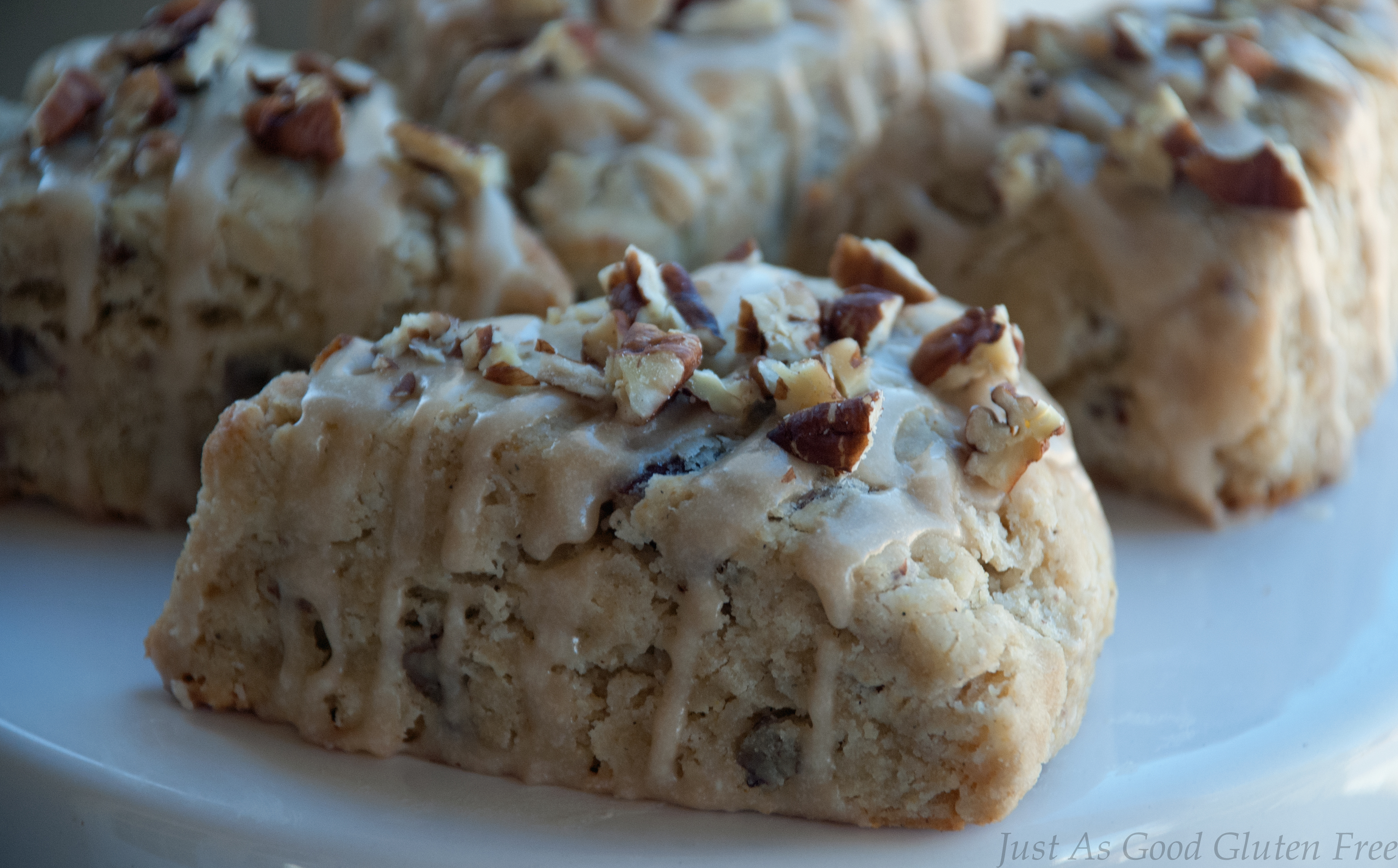
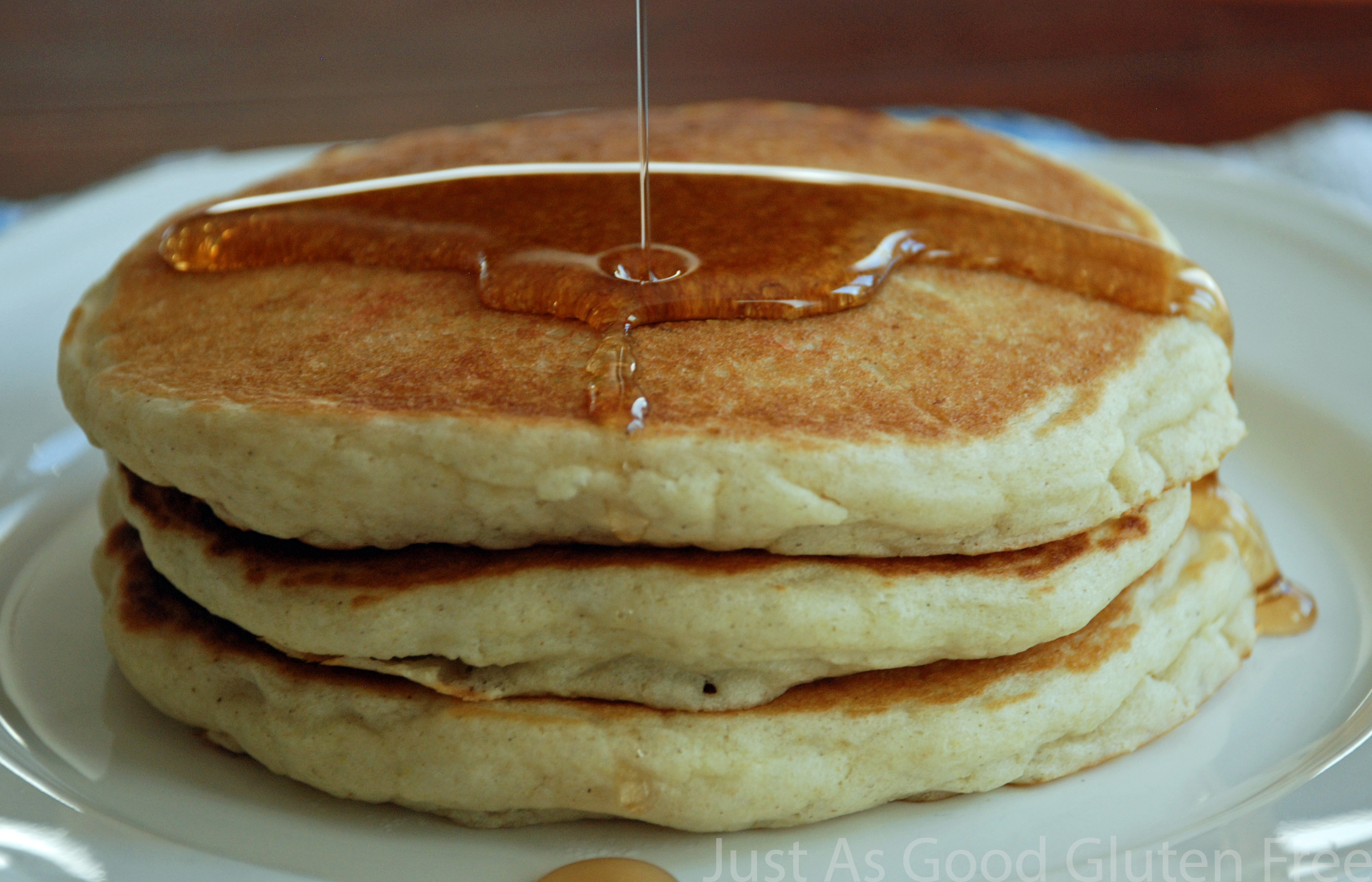
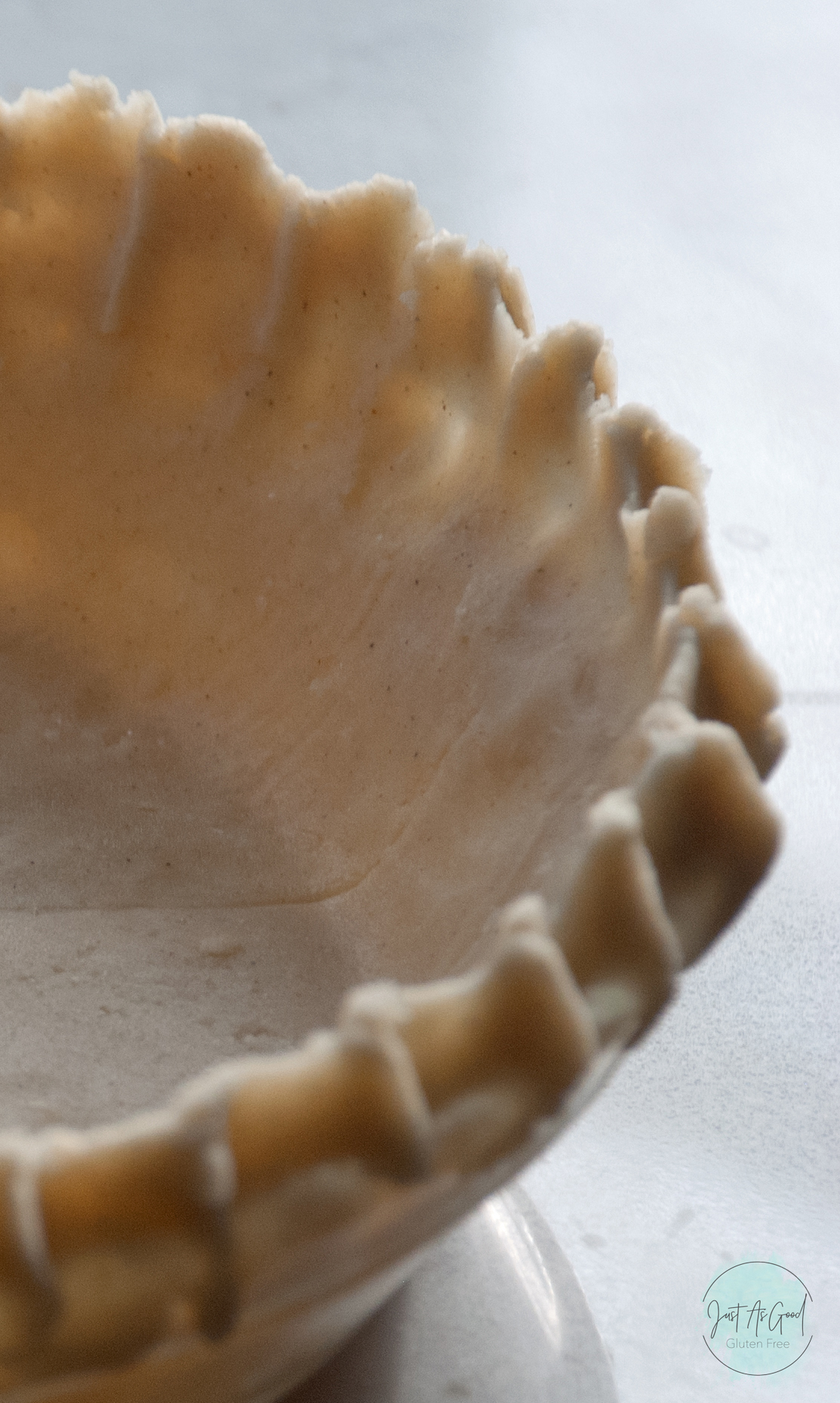
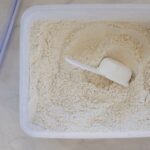
Wendy
This looks amazing and I image is leas expensive and easier to find. I can’t wait to try. I am wondering if you know what 1:1 blend should be used in a bread maker?
Amy Wilson
I do not own a bread machine so unfortunately I can’t speak to whether this will work! I would recommend following any recipe, particularly if it gives instructions on using bread machines for gluten free bread. There’s some great gluten free bread groups on Facebook that could offer more experience for bread machines!
Robyn
What can be used as a substitute for potato starch? my husband has many food sensitivities, one being white potatoes.
Amy Wilson
Substitutes could be other starches, such as cornstarch, tapioca starch, arrowroot starch, etc. Unfortunately, potato starch weighs more than other starches, so depending on which you decide to use, you’ll have to look up the amount it weighs per cup or gram. For example, potato starch weighs 190 grams per cup, whereas tapioca starch weighs 160 grams per cup. That’s a big difference! If I was in your situation, my first instinct would be to use tapioca starch in place of the potato starch. So maybe try using 690 grams of tapioca starch total instead??? I’ve never tried this, so I’m winging it. If you try it, let me know! I’d be curious to see how it turns out.
Maggie
This flour blend works wonderfully! I made this a few months back because my sister-in-law is gluten free and can’t tolerate xanthan gum. So far I’ve used it in coffee cake and cookies and it works so similarly to white flour. Thanks for the great recipe!
Amy Wilson
I’m so glad you like it!! I’ve been using it for years. Thanks for sharing
Barb
Hi! Could I replace arrowroot with cornstarch perhaps? We don’t really find arrowroot where I live. Thanks for the recipe!
Amy Wilson
You can! Corn starch weighs slightly less per gram at roughly 120 grams, whereas arrowroot starch is around 128 grams. I don’t think it will hurt if you swap the ingredients straight up, but if you’re looking to be precise I would reduce the cornstarch by maybe 18 grams. It’s a fairly small amount and honestly I would personally not change it (arrowroot has more thickening power than cornstarch so I’d be more concerned swapping cornstarch for arrowroot). I hope that helps!